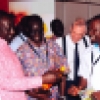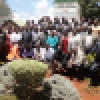- Staff Mail
- UTaNRMP Intranet
- UTaNRMP Forum
About UTaNRMP
Project Background
Upper Tana Catchment Natural Resources Management Project (UTaNRMP) is an ten year project (2012-2022) funded by Government of Kenya, International Fund for Agricultural Development (IFAD), Spanish Trust Fund and the Local community. The goal of the project is to “contribute to reduction of rural poverty in the Upper Tana river catchment”. This goal is pursued via two development objectives which reflect the poverty-environment nexus namely (i) increased sustainable food production and incomes for poor rural households living in the project area; and (ii) sustainable management of natural resources for provision of environmental services.
Kapingazi/Rupingazi(Kiye ,Thambana, Nyanjara,Gichangai,Itabua and Kathita),
Kathita (Rugusu, Kathita, Munyi, Gachiege, Kanyango, Ngaciuma, Kinyaritha, Kuuru, Riiji).
Kithinu/Mutonga(Naka,Nithi,Maara South,Maara North and Thuci),
Tungu (none)
.
The upper Tana catchment is home to 5.2 million people and is under heavy and growing population pressure. The project aims at poverty reduction targeting about 205,000 households (1,025,000 people) whose livelihoods revolve around the use of the natural resources of Upper Tana catchment. These include smallholder crop and livestock farmers, agro-pastoralists, fishers, rural traders, and community groups involved in natural resources management (NRM) and income generating activities. Special focus is on women and youth as well as other vulnerable groups within the above categories. The project also provides indirect benefits to the non-target groups in the Upper Tana catchment through services and enterprises linked with the project activities, as well as to populations outside the catchment who rely on water and hydro-electricity from the river system.
The Implementation is through four components namely: Sustainable Water Resources and Natural Resources management, Sustainable Rural Livelihoods, Community Empowerment and Project Coordination and Management.
The Tana River is the most important river basin in Kenya, provides water for about half the entire Kenyan population
The goal of the project is to “contribute to reduction of rural poverty in the Upper Tana river catchment”. This goal is pursued via two development objectives which reflect the poverty-environment nexus:
- Increased sustainable food production and incomes for poor rural households living in the project area; and
- Sustainable management of natural resources for provision of environmental services.
The objectives are in line with: (i) IFAD’s goal of empowering rural women and men to achieve higher incomes and improved food security; (ii) Kenya’s Vision 2030 blueprint which aims at creating a “globally competitive and prosperous country with a high quality of life by 2030” and transforming Kenya into “a newly–industrializing, middle–income country providing a high quality of life to all its citizens in a clean and secure environment.
GET IN TOUCH
- P.O Box 996-60100 Embu-Meru Road,
Embu , Kenya - Phone: 068 22 31376
- Email: utanrmp@gmail.com
info@utanrmp.or.ke
UTaNRMP Electronic Magazine
Stay informed on our latest news!



